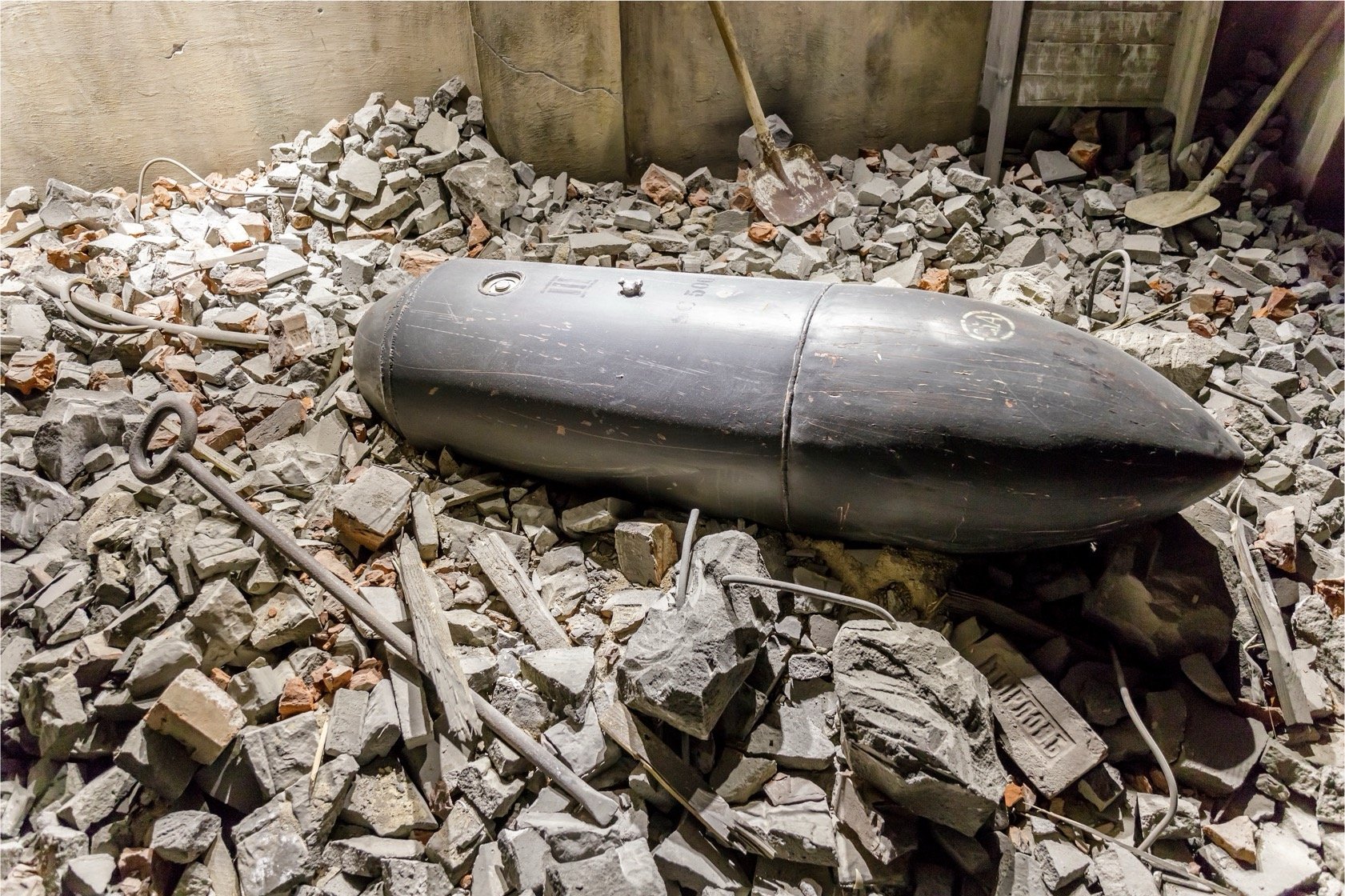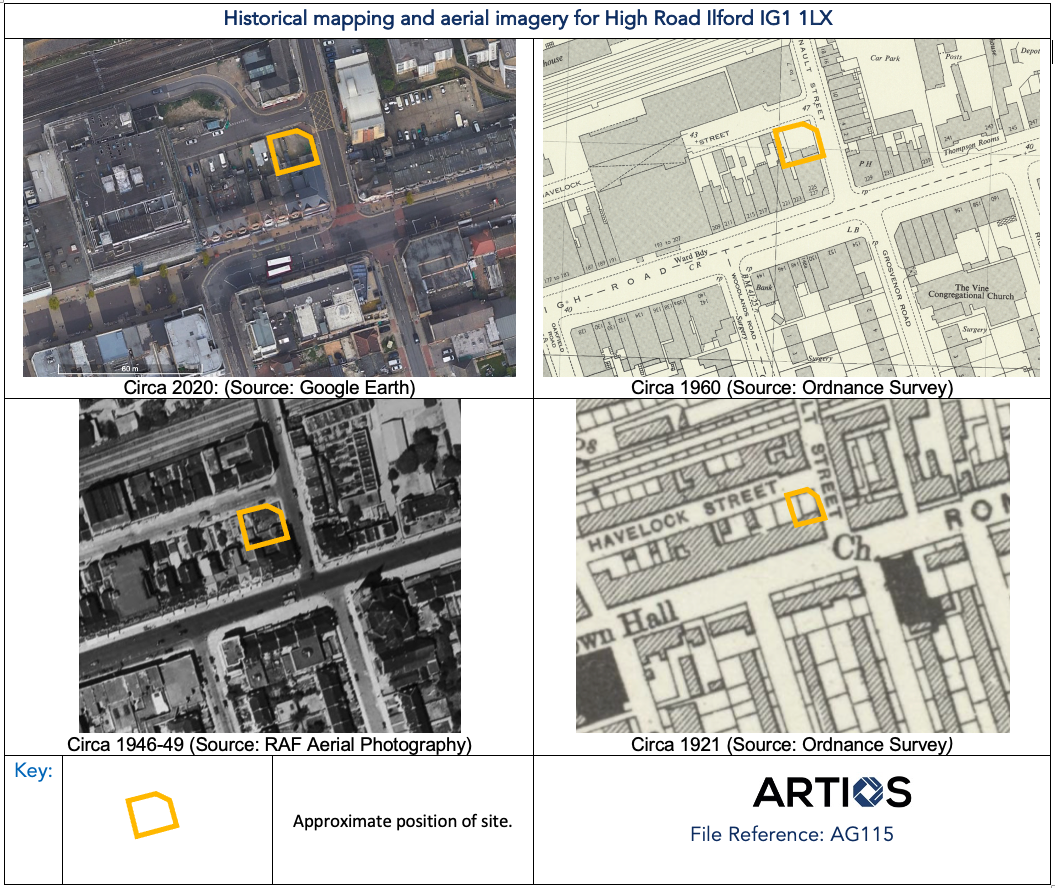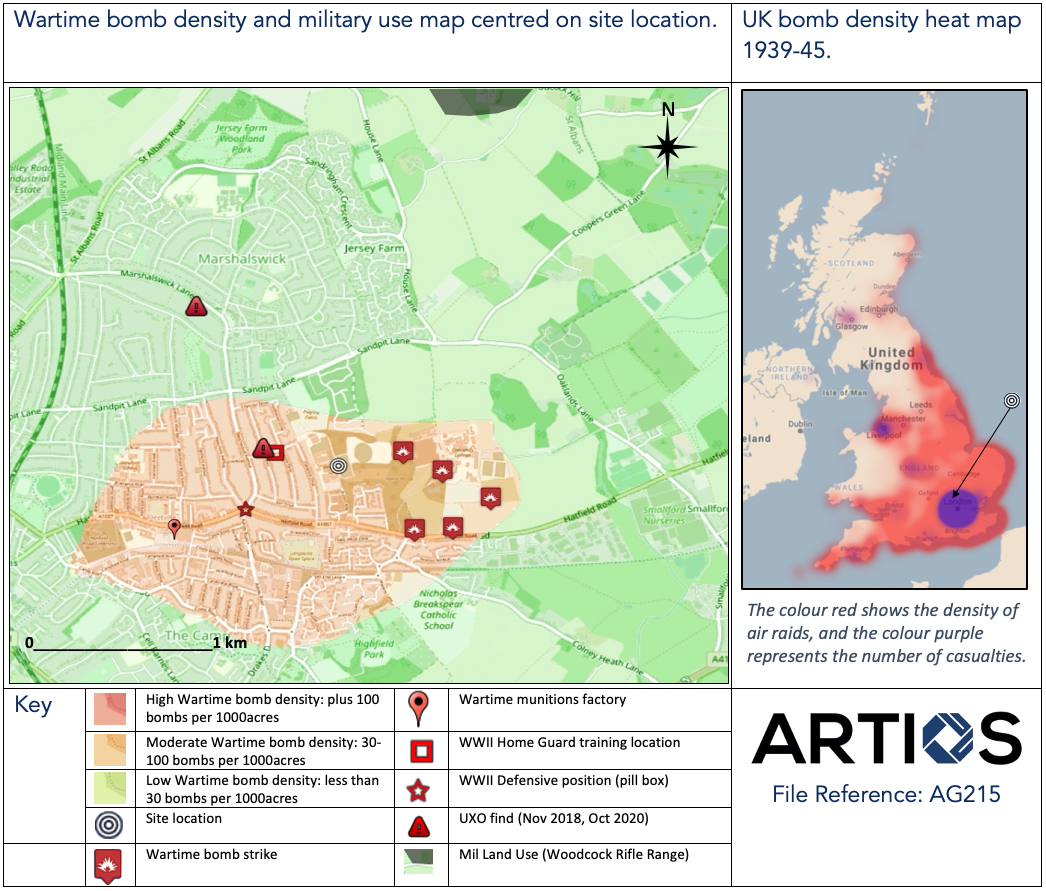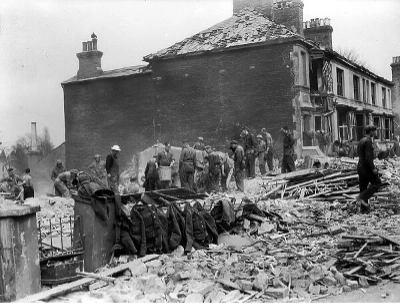Why Artios?
World Class Expertise, Unparalleled Precision and Impartial Assessment
Artios Global provides leading UXO risk management services, delivered with expert precision and comprehensiveness. As a trusted and reliable partner for identifying and mitigating unexploded ordnance (UXO) risks, we have a proven track record across various sectors.
Our approach combines technical expertise with a commitment to safety and efficiency for all involved. Additionally, our advanced methodology is fully compliant with CIRIA C681 standards, ensuring technical accuracy and adherence to industry best practices for UXO risk management.
Understanding the Artios Approach
We provide systematic, reliable and cost efficient solutions to effectively mitigate UXO (Unexploded Ordnance) risks, ensuring your project advances with clarity, safety and confidence.
Whether you’re working on construction, civil engineering, or environmental projects, our expertise enables us to address UXO challenges effectively.with precision and professionalism. Built around years of combined experience, our services are designed to streamline UXO risk management processes through a structured approach, ensuring no step is overlooked.
This includes:
Initial Consultation
A thorough and comprehensive assessment conducted by our expert team to identify and evaluate potential UXO hazards specific to your site. We combine site analysis, historical research and risk profiling to create a detailed understanding of the threats.
Detailed Research and Realistic Analysis Planning
Development of tailored risk mitigation strategies that align with both your project’s unique requirements and industry regulations. Our planning process prioritises safety while minimising disruptions to your timelines and budgets. A key feature of our reports is the realistic assessment of UXO risk on site, depending on the level of post WWII activity, often resulting in ‘zoned’ risk maps, where different areas within the same site are assessed individually. This feature is highly valued and appreciated by our clients.
Implementation
Seamless execution of risk reduction measures, carried out by highly trained professionals using advanced tools and techniques. We adhere strictly to industry standards to deliver precise results and complete peace of mind.
With an unrelenting commitment to technical accuracy, innovation and exceptional client support, Artios Global ensures that every phase of the UXO risk management process is handled with care, expertise and efficiency.
Streamlined CIRIA C681 Compliance
Artios offers comprehensive and precise support throughout Stages 1–3 of the CIRIA C681 process, ensuring each step is conducted methodically and aligned with industry standards.
Preliminary Risk Assessment (PRA)
A systematic and cost-efficient methodology designed to identify and exclude unnecessary actions for sites with minimal risk levels. This approach ensures resources are focused where they are most needed.
Detailed Risk Assessment (DRA)
A thorough investigative process tailored for high risk areas. This method provides evidence based recommendations supported by comprehensive analysis, ensuring decisions are grounded in reliable data.
Risk Mitigation Plans
Strategically developed and actionable plans focused on achieving the ALARP (As Low As Reasonably Practicable) standard. These plans are designed to effectively reduce risks while maintaining a clear, practical framework for implementation.
Frequently Asked Questions
-
UXO stands for Unexploded Ordnance, referring to explosive weapons such as bombs, shells, grenades, land mines and naval mines that were deployed during conflict or during military training activity, but failed to detonate as intended. UXO poses a severe risk to property as well as to Health and Safety, as not only can they be in an ‘armed’ state, with inherent safety features deactivated upon deployment/release, but also they may be highly volatile due to the changes to explosive chemicals within them over time. UXO encounters must be treated very seriously and relevant authorities must be informed as soon as possible.
-
Most of the UXO contamination within the UK originates from the Second World War, either due to enemy bombing activity or from Allied military activity within the country. Modern-day military training, which includes live weapons firing is also a contributing factor; however, this activity is restricted to designated military firing ranges that are clearly delineated and marked. While UXO contamination in the UK is not as high as within continental Europe, it still poses a considerable risk when any intrusive ground works are carried out in several parts of the UK, especially where large scale wartime military training or bombing activity has occurred.
-
A site-specific Desktop UXO Survey / UXO Risk Assessment conducted by a UXO specialist will determine whether or not a risk of contamination exists on site and to what extent.
-
A UXO risk assessment evaluates the likelihood of encountering UXO during projects that largely require intrusive ground works or excavations, although other less intrusive projects can be affected. Conducted in progressive stages, the process is based on systematic historical research and considers four primary factors to assess the risk of potential UXO encounters at a site:
The extent and type of wartime bombing in the area.
The historical military use of the area, including training, defense, or other purposes, along with the likely types of ordnance used.
Post-war development in the area after exposure to potential UXO contamination.
The specifications of planned construction work and the exposure of other potential receptors to UXO contamination.
A relatively short Stage 1 or Preliminary Risk Assessment (PRA) can effectively rule out the need for further action at many sites, eliminating the need for further investigations or actions to mitigate potential risks from UXO contamination.
A higher-risk area identified by a PRA is then researched more comprehensively, leading to a Stage 2 or Detailed Risk Assessment (DRA), which describes the potential UXO risk in greater detail and also recommends Risk Mitigations (comprising Stage 3) to reduce the risk to a level that is assessed to be as low as reasonably practicable (ALARP).
This assessment process is structured according to the Risk Management Strategy outlined in the industry-standard 'CIRIA C681 UXO - A Guide for the Construction Industry.' Artios closely follows this process and our reports are designed as per its specifications.
-
The CIRIA C681 process follows a cost-effective approach, recognising that, for the majority of UK sites, a quick and straightforward assessment can determine that no further actions are required. It is recommended that an inexpensive Stage 1 PRA is conducted for any site in the UK where intrusive ground excavations are to be carried out, so as to rule out UXO risk, even if marginal. It is certainly not true that all sites in the UK require a Stage 2 DRA.
-
Free UXO risk maps normally only consider WWII bombing density across the UK and do not consider other factors, such as wartime and modern-day military land use, and Artios Global Stage 1 UXO risk assessments critically consider intrusive works planned by the customer and post war development, which may be critical in determining the need for a Stage 2 UXO risk assessment.
Wartime bombing density is a crucial factor in assessing UXO risk and while such maps can certainly help identify areas where more detailed assessment (DRA) is needed, they are not in themselves sufficient to gauge the appropriate mitigations required to effectively and efficiently manage UXO risk. Solely relying on such maps also bears the risk of misidentifying a site as ‘low risk’, as even areas subject to negligible wartime bombing may have been affected by other sources of UXO contamination.
-
Based on the likelihood of UXO Encounter at the site and the nature of intrusive groundworks being conducted, there are a range of options available to mitigate the risk to a level that is as low as reasonably practicable (ALARP). These include simple UXO Awareness Training for staff, Watching Briefs, and Intrusive or Non-intrusive surveys conducted by UXO specialists or engineers using a variety of technical instruments. Some of these are listed below:
Pre-empting the UXO risk
UXO Awareness Training / Tool-Box Talks
Watching Brief
Non-Intrusive UXO Survey
Handheld Detector Search
Ground Probing Radar (GPR)
Surface Magnetometry
Intrusive UXO Survey
Cone Penetration Testing (CPT)
Downhole Magentometry
Target investigation
-
We offer a range of services, including:
UXO Risk Management: Conducting Preliminary Risk Assessments (PRA), Detailed Risk Assessments (DRA) and developing Risk Mitigation Plans in line with CIRIA C681 guidelines.
The development and delivery of training and publications and the provision of research, third party assurance and risk management services as part of our global reach in:
Mine Action: The clearance of land of mines IEDs and ERW; managing stockpiles; and training police/military in EOD, IEDD and Advanced Search.
Stabilisation: Security Force Assistance (SFA) and Rule of Law (RoL) programs, including bomb disposal training, UN mentoring and weapons management.
Strategy and Research: Our R3 Labs methodology supports evidence informed decision making and strategy through s research, focusing on areas such as the energy transition (critical minerals), localisation of trade and aid, and national security.
-
Our UXO Risk Management services cover all of the UK, including Northern Ireland.
-
We are certified in ISO 9001:2015 (Quality Management Systems), ISO 14001:2015 (Environmental Management Systems), CHAS, Institute Munitions Clearance and Search Engineers, and Cyber Essentials Plus.
Benefits of Desktop Research and PRA
High clarity on initial risks, often ruling out the need for further actions.
Alignment with industry-standard frameworks for structured risk management.
Fast turnaround times, enabling informed decision-making at the earliest stages.
Independent Peer Review and Quality Assurance
Verification of risk categorisation and proposed mitigations.
On-site inspections and third-party quality assurance during Stage 4 activities.
Guidance in drafting Statements of Requirement for procurement processes.
Data Driven Methodology for Risk Assessments
Cross-referencing bomb census mapping, war diaries and archival data.
Analysing aerial footage to accurately define risk zones.
Customised site walkovers to validate desktop findings.
Advanced modelling tools to assess risks by likelihood and severity.
Partner With Artios for Safe and Compliant Projects
Ensure the safety of your team, assets and stakeholders with Artios' comprehensive Unexploded Ordnance (UXO) expertise. Our methodical and research driven approach is grounded in strategic planning, impartial analysis and thorough investigation to deliver reliable, actionable results tailored to your specific needs.
From initial surveys to final clearance, our team ensures your operations are carried out with the utmost diligence, giving you the confidence to move forward without hesitation.
Still want to learn more about partnering with us? See what our clients have to say right here in our case studies section!

Enquire now for a quick, thorough and cost effective UXO risk management.
Benefit from one of the UK’s leading providers of UXO risk management.
Help us understand your specific requirements by filling in the form. Alternatively you can call 03301333661 or email us at uxo@artiosglobal.com.







